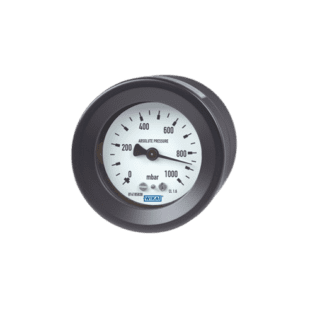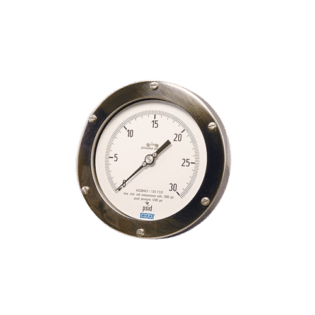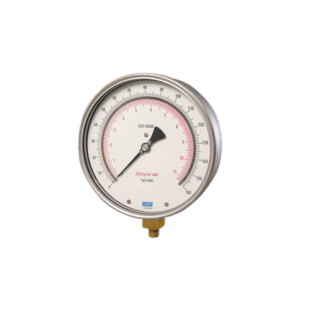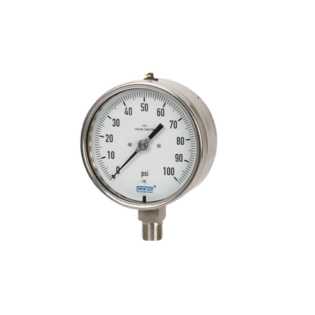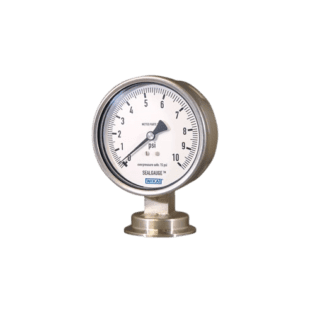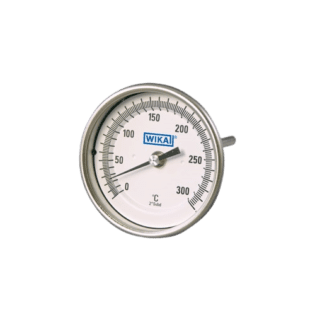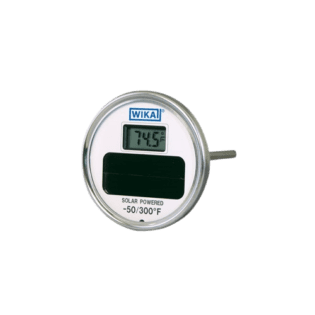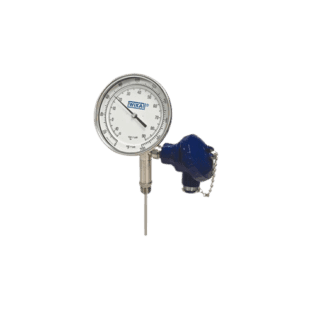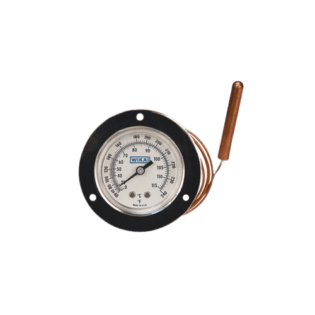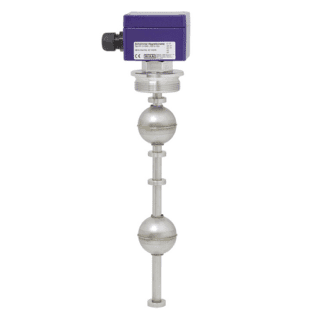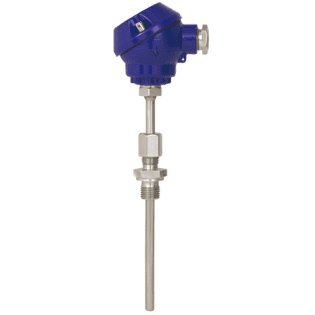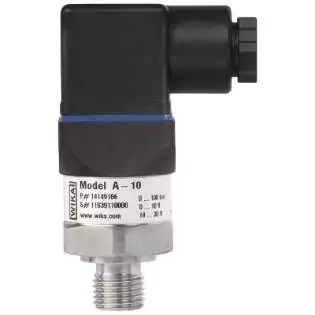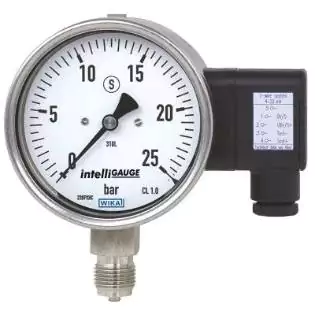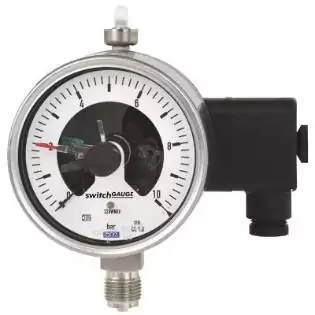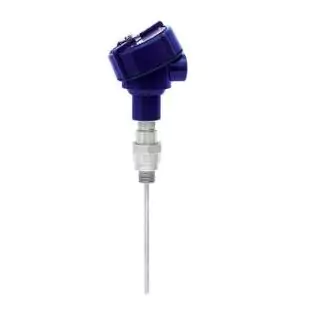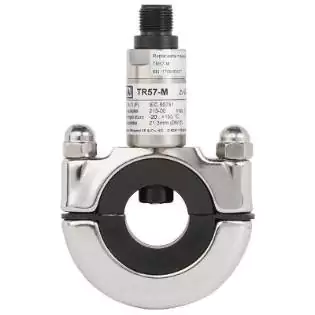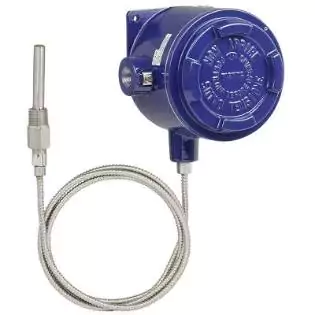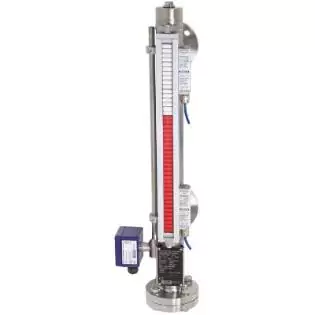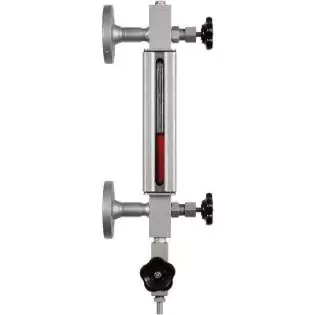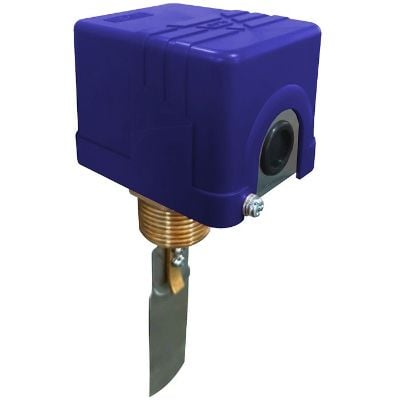


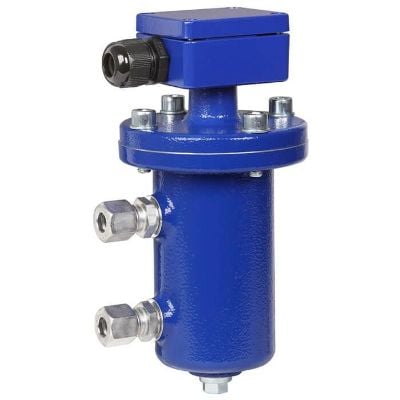
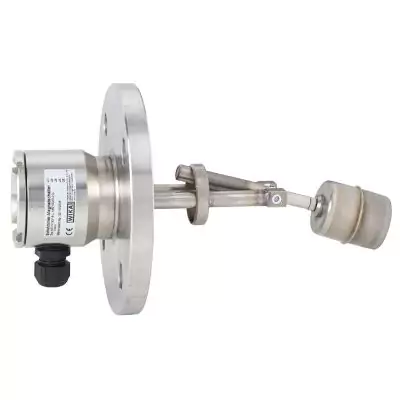
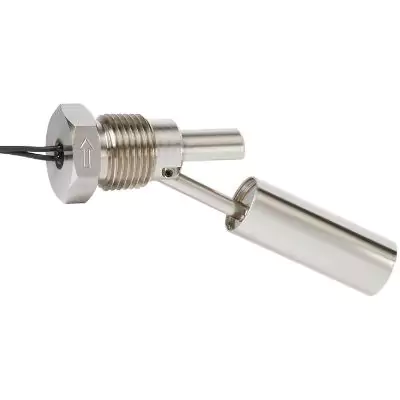






Wika Float switches
In the (process) industry, float switches are utilized for the point-based level-based limit level detection of one or more levels. They function without the help of vibrations, pressure, vacuum, temperature, vapours, condensation, bubble formation, conductivity, dielectric, pressure, foaming, or boiling effects, and are appropriate for practically all liquid media. The switching process requires no supply voltage, is contact-free, and is wear-free. The float switch's straightforward and reliable functional concept allows for a very broad range of industrial applications, including use in process plants and the shipbuilding industry.
-
Original Products
-
Warranty Against Defects
-
Returns & Refunds Policy
-
Ships Worldwide
-
Dedicate Support
- Model RLS-1000
- Model
- Models HLS-S, HLS-P
- Model ELS
- Model HLS-M
- Model RLS-5000
 |
Applications |
| Level measurement of liquids in machine building | |
| Control and monitoring tasks for hydraulic power packs, compressors and cooling systems | |
| Special features | |
| Maximum reliability thanks to high-quality reed contacts | |
| Very high variety and customer-specific solutions possible | |
| Simple and fast installation | |
| Description | |
| The RLS-1000 is a robust, reliable and inexpensive float switch. Since the monitoring of levels as well as dry-run protection and overflow protection are cost-sensitive applications in the machine-building industry, a float switch is the ideal solution for many plants. The RLS-1000 reliably detects the level in vessels with water, oil, diesel or other liquids by means of a permanent magnet and frictionless reed contacts at max. 4 defined switch points and can be used in a medium temperature range from -30 to +150 °C [-22 to +302 °F]. | |
| The compact float switch is simple, convenient and fast to integrate, because it does not need to be calibrated or set during the installation. This greatly improves the ease of handling, especially in confined installation situations. Also, since its robust design makes it resistant to vibrations and shocks, maintenance costs are minimal. |

Applications
- Level measurement for almost all liquid media
- Pump and level control and monitoring for distinct filling levels
- Chemical, petrochemical, natural gas, offshore, shipbuilding, machine building, power generating equipment, power plants
- Process water and drinking water treatment, food and beverage industry
Special features
- Large range of application due to the simple, proven functional principle
- For harsh operating conditions, long service life
- Operating limits:
- Operating temperature: T = -50 ... +350 °C
- Operating pressure: P = Vacuum up to 40 bar
- Limit density: ρ ≥ 300 kg/m3
- Wide variety of different electrical connections, process connections and materials
- Explosion-protected versions
Description
A float with a permanent magnet moves reliably along with the liquid level on a guide tube. Within the guide tube is fitted a reed contact (inert gas contact), which is energised, through the non-magnetic walls of the float and guide tube, by the approach of the float magnet. By using a magnet and reed contact the switching operation is non-contact, free from wear and needs no power supply. The contacts are potentialfree. Float switches are also available with multiple switch points.
The switching functions always refer to a rising liquid level: Normally open, normally closed or change-over contact.
Through the use of a float for a max. of 2 switch points a bistable switch behaviour can be achieved, meaning that the switching status also remains available, when the filling level continues to rise above or drop below the switch point.
The float switch is simple to mount and maintenance-free, so the costs of mounting, commissioning and operation are low.

Applications
- Level detection for almost all liquid media
- Pump and level control
- Chemical, petrochemical industry, natural gas, offshore, shipbuilding, machine building, power generating equipment, power plants
- Process water and drinking water treatment
Special features
- Large range of application due to the simple, proven functional principle
- For harsh operating conditions, long service life
- Operating limits:
- Operating temperature: T = -120 ... +350 °C
- Operating pressure: P = Vacuum to 232 bar
- Limit density: ρ ≥ 500 kg/m3 - Stainless steel and plastic versions
- Explosion-protected versions
Description
In addition to the various applications for float switches for vertical installation (model FLS), the model HLS horizontal float switches likewise offer innumerable possibilities to monitor and/or switch levels in order to indicate minimum/maximum levels. The float is attached to a supported, swivelling lever and moves with the level of the medium being measured. By means of a permanent magnet, fixed to the end of the lever, when a preset switch point is reached, a reed contact (inert gas contact) within the contact tube is actuated.
By using a permanent magnet and a reed contact the switching operation is non-contact, free from wear and needs no power supply. The functioning of the float switch is independent of foaming, conductivity, vapours, bubble formation and vibrations. The signal processing is universal. Direct connection to PLCs, NAMUR connections, signal amplifiers or contact protection relays is possible. The float switch is simple to mount and maintenance-free, so the costs of mounting, commissioning and operation are low.

Applications of the level switch
- Mounting on engines, tanks, vessels or enclosures, where, due to a lack of space, installation within them is not possible
- Use for turbulent liquid levels such as in oil sumps in large engines, gearboxes etc.
- Pump and level control and monitoring of distinct filling levels
- Chemical, petrochemical industry, natural gas, offshore, shipbuilding, machine building, power generating equipment, power plants
- Process water and drinking water treatment
Special features
- Freely selectable switch position through fixing the float switch at the required level
- Large range of application due to the simple, proven functional principle
- For harsh operating conditions, long service life
- Operating limits:
- Operating temperature: T = -30 ... +150 °C
- Operating pressure: P = Vacuum up to 40 bar
- Limit density: ρ ≥600 kg/m3
Description
In an external chamber (bypass chamber), a float with a permanent magnet moves on a guide tube in relation to the liquid level, following the principle of communicating vessels. Within the guide tube is fitted a reed contact (inert gas contact), which is energised, through the non-magnetic walls of the float and guide tube, by the approach of the float magnet. By using a magnet and reed contact the switching operation is non-contact, free from wear and needs no power supply. The contacts of the level switch are potential-free.
The switching functions always refer to a rising liquid level.
Thelevel switch is simple to mount and maintenance-free, so the costs of mounting, commissioning and operation are low.

Applications
- Level monitoring and level indication of liquids
- Level detection for almost all liquid media
- Pump and level control
- Alarm signals
- Dry-run and overflow protection
Special features
- Lateral installation in the tank
- Operating limits:- Operating temperature: T = -40 ... +120 °C- Operating pressure: P = 5 bar
- Limit density: ρ ≥800 kg/m3 - Plastic and stainless steel versions
- Space-saving installation
- Switch consists of only one component
Description
With its compact design, the model HLS-M float switch for horizontal installation in miniature design is ideally suited for use in small tanks, for indicating minimum/maximum levels.
The float is attached to a supported, swivelling lever and moves with the level of the medium being measured. By means of a permanent magnet, when a preset switch point is reached, a reed contact (inert gas contact) is actuated.
By using a magnet and reed contact the switching operation is non-contact, free from wear and needs no power supply. The contacts are potential-free.
The switching function refers to a rising liquid level: Standard use as normally open contact (can be used as normally closed contact by a 180° rotation).
The float switch is simple to mount and maintenance-free, so the costs of mounting, commissioning and operation are low.

Applications
- Shipbuilding
- Bilge water management
- Applications with strong mechanical loading
- Contaminated media
Special features
- Robust stainless steel case to protect against mechanical damage
- Durable and resistant marine cable
- With manual test device (optional)
Description
The model RLS-5000 bilge float switch is used for the monitoring of limit levels in shipbuilding (e.g. in bilge water tanks) and industrial applications. The robust stainless steel case and the durable marine cable outlet protect the float system even under high mechanical loading, e.g. due to flotsam such as sticks and pieces of wood. Inside the stainless steel case, a permanent magnet built into the float triggers, with its magnetic field, the potential-free reed contact built into the pipe.
The triggering of the reed contact by the permanent magnet is contact-free and thus free from wear. The reed switch function is freely definable as normally open, normally closed or change-over contact. In the event of maintenance, the optionally available test device enables the manual triggering of the float by a movable wire bracket.
With its optimised mechanical design and certification in accordance with the leading maritime standards, the RLS-5000 is particularly suitable for long-term and reliable use in shipbuilding applications.

